Introduction
This exhibition from Georgetown University’s collections is about the art of the architect. The name “architect” first appeared in 17 B.C. in a work by the Roman practitioner Vitruvius entitled On Architecture, a ten-book treatise on the theory and practice of early Greek and Roman architecture. In Book VI the author listed three characteristics that make for good architecture: firmitas (structural soundness), utilitas (usefulness), and venustas (elegance).
Great architecture achieves its greatness in its venustas, mirroring the aspirations and aesthetic sensibilities of its architect, sensibilities of its architect, his patron, and his time. And it is this elegance which attracted generations of printmakers to record it wherever they found it, be it in a monument or building, a battleship or bridge. In this sense, architecture may be said to be the mother of the printmaker’s art.
Monuments to Power
From the dawn of recorded history, architects have been called upon to help celebrate power—be it divine, or human. It may be that of a single individual, or of groups or nations of people. Sometimes it might also be for some powerful and earth-shaking event that brings with it grief or joy.
This first section presents five examples of prints inspired by such monuments, beginning with Frank Brangwyn’s rendering of the Monument to the Great Fire of London in 1666 designed by Sir Christopher Wren. The second and third prints are of the Washington National Monument, one being Robert Mills’ original design of 1846 as lithographed by Charles Fenderich, and the other by Leon Dolice of the monument as it was finally completed in 1884.
The fourth and fifth prints by Richard Haas are monuments to economic power—that of the country’s Empire State, and that of Walter P. Chrysler, one of its prominent industrialists. Note that these were printed on aluminum panels which catch the reflective qualities of the stainless steel surfaces of these two landmark buildings.
An American Portfolio
This section presents a group of fifteen prints dealing with American architecture. It begins with Herbert Sanborn’s “Cathedral,” a lithographic study of the soaring lines of the interior space of Washington’s National Cathedral. It is followed by two prints of Pittsburgh, Ernest Wilson Boyer’s rendering of the Westinghouse Memorial Bridge, and Earl Horter’s portrayal of a steel mill’s blast furnace stoves with their workers’ houses clinging to an adjacent hillside.
The architecture of New York is the subject of the next three prints, beginning with Howard Cook’s splendid aquatint, “Soaring New York,” a panoramic view of the city’s skyline in 1932. The second print is Frederick Mershimer’s “Ascension,” a 1993 color mezzotint of St. Bartholomew’s Church in a sea of taxis against a backdrop of surrounding skyscrapers. The third is Chester B. Price’s “Two Towers, Manhattan,” a 1931 rendering of Trinity Church and a nearby skyscraper.
These are followed by Richard Florsheim’s “Shoreline,” a lithograph of architectural forms parading along Chicago’s waterfront. Below this is Aline Fruhauf’s “Georgetown House” of 1959, a Victorian landmark on R Street, N.W. not far from the University. To our left is Benson Bond Moore’s “Georgetown University Over Key Bridge,” and on our right, Reynold Weidenaar’s “Connecticut Avenue Bridge” in Washington, D.C.
The next print is Charles Mielatz’s 1899 etching of New York City’s once proud and former landmark, “Naval Arch,” the nation’s tribute to its Navy and its Admiral Dewey at the end of the Spanish American War.
To our right is John Taylor Arms’s etching of “Battle Wagon: USS Alabama,” a feat of WW-II naval architecture of its day. Below it is Salvator Pinto’s wood engraving entitled “Factory,” a celebration of the clean lines of its industrial architects.
Then comes “Mount Vernon Place - Baltimore,” a cooperative venture in etching by two artists: Andrew Karoly who contributed the park, its Washington Monument and surrounding buildings including the Walters Art Gallery on the left, and the Peabody Institute on the right; and Louis Szanto who added the seventeen pedestrians.
The last print is Syd Browne’s “Along the Canal - Georgetown,” a lithograph of 1943, with the University’s towers rising serenely above the bustle.
Some European Classics
This section of fourteen prints begins with three views of London architecture—John Bentley’s 1893 etching of the sun drenched interior of Westminster Abbey, Muirhead Bone’s “Picadilly Circus - 1915,” and Ian Strang’s etching of the grand facades of the city’s “Harley Street” dated 1927. Bone’s rendering of Picadilly Circus with its night sky of roving WW-I search lights is considered to be one of the greatest drypoints of the British Etching Revival.
Next comes John Taylor Arms’s “Venetian Filigree,” an exquisitely etched print of the city’s palatial Ca’ d’Oro. Below it is Albert Decaris’s line engraving, “The Uffizi, Florence,” once part of the Medici palace compound and now one of the world’s finest art museums.
These are followed by Giovanni Battista Piranesi’s 1749 rendering of the “Basilica of St. Mary Major” in Rome with the ancient fluted column in the left foreground, a relic from the Forum’s Basilica of Constantine, moved here by Paul V in 1613 and crowned with a statue of the Virgin. Below this is the oldest print in the Georgetown collections, an anonymous hand-colored woodcut of German origin of a walled medieval cityscape circa 1500.
Next comes M. C. Escher’s important wood engraving of 1935 entitled “Dream,” also known as “Mantis Religiosa.” Below it is the rare lithograph by Ralph Fabri, “Flemish Castle.”
The section continues with three prints by Austria’s Kasimir Family—the father Luigi’s 1922 etching & aquatint of Vienna’s “Opera House,” his son Robert’s color etching of the city’s “Imperial Palace Gate,” and the wife and mother Tanna’s color etching of “Salzburg,” a winter landscape in the snow.
The section ends with Irving Amen’s colorful woodcut of 1955, “Piazza San Marco #4” which takes us back to Venice for another look, and Nelson Dawson’s “Venetian Hay Boat,” a humorous 1914 soft ground etching of two frantic oarsmen paddling their cargo across center stage past an American millionaire’s yacht riding at anchor just off the picturesque Venetian waterfront.
Ecclesiastes 3:3
In the Bible’s book of Ecclesiastes, the 1st verse of its 3rd chapter begins with these words: “There is an appointed time for everything, and a time for every affair under the heavens.” Its 3rd verse adds that this also includes “a time to tear down and a time to build.” This final section of the exhibition looks at examples of the architect’s awareness and response.
In the first two prints, Reynold Weidenaar’s “Demolition in the Plaza del Toro,” and Job Nixon’s “Demolition of Devonshire House,” we see the hand of man in the process of tearing down the art of architects. In the 3rd print, Louis Rosenberg’s “Temple of Minerva Medica,” we are confronted with more tearing down, but in this case it is time and the elements which have taken their toll on Rome’s once splendid 3rd century A.D. edifice, reducing it to a picturesque ruin with the final collapse of its cupola in 1828.
The 4th print, “Devil’s Bridge - St. Gothard’s Pass” in the Swiss Alps, is a color woodcut in the Japanese manner by M. Y. Urushibara after a watercolor by Frank Brangwyn. The crumbling old bridge is in the foreground. Fable has it that the devil built it to assist hordes of long-forgotten marauders through the Pass intent on reaching Northern Italy to ravage its lands. In the background we find their shades racing across the bridge that might have been theirs, if only the devil had read Vitruvius on firmitas, utilitas, and venustas too.
Below it is Seymour Haden’s “Breaking up of the Agamemnon,” Britain’s once proud 91-gun flagship launched in 1852, now delivered in 1870 to the breakers for demolition. Contrast this with the etching of “Battle Wagon: USS Alabama” by John Taylor Arms as it was delivered in 1943 for outfitting in #12, Section II above—both were achievements of the naval architects of their day.
The next two prints are by Gerald Geerlings, noted architect and printmaker. The first is “Today and Tomorrow,” a 1930 parade of Chicago’s lakeside skyscrapers with sketches of a future Chicago riding high above it in the sky. His 2nd print, “Olympus,” is of a New York skyscraper nearing completion in 1929.
The final print is Joseph Pennell’s “Caissons on Vesey Street,” an outstanding example of his printmaking skills. Note the clouds of steam, smoke and dust rising up amid the clangor raised in sinking 22 caissons down 75 feet to reach bedrock in 1924 for the foundations of the New York Telephone Company’s new skyscraper as the Woolworth tower serenely takes it all in from the safety of its vantage point several blocks away.
The Monument
Brangwyn, Frank, 1867-1956
1912
Etching in sepia
707 x 453 mm
Designed by Christopher Wren to commemorate the great London fire of 1666
Washington National Monument
Fenderich, Charles, 1805-1887
1846
Lithograph
478 x 375 mm
As originally planned by Robert Mills, with obelisk and pantheon
In Washington, D.C.
Dolice, Leon Louis, 1892-1960
n/d
Color lithograph
507 x 296 mm
The Washington National Monument as completed in 1884
Empire State Building
Haas, Richard, b.1936
1997
Lithograph and silkscreen
830 x 363 mm
Printed in color on aluminum
Chrysler Building
Haas, Richard, b.1936
1997
Lithograph and silkscreen
835 x 368 mm
Printed in color on aluminum
Soaring New York
Cook, Howard Norton, 1901-1980
1931
Aquatint and soft-ground
227 x 301 mm
State 3 of 4 states
Naval Arch - Fifth Avenue and 23rd Street (NYC)
Mielatz, Charles F. W., 1864-1919
1899
Etching
376 x 275 mm
Mount Vernon Place-Baltimore
Karoly, Andrew B., b.1895, Szanto, Louis P., 1889-1965
n/d
Etching
310 x 377 mm
Szanto did the pedestrians
Westminster Abbey Interior
Bentley, John T., fl. 1890s
published by C. Klackner
1893
Etching in sepia
604 x 387 mm
Devil's Bridge - St. Gothard's Pass
Urushibara, Mokuchu Yoshijuro, 1888-1953, Brangwyn, Frank, 1867-1956
c.1918
Color woodcut
364 x 505 mm
Breaking up of the Agamemnon - No.1
Haden, Francis Seymour, 1818-1912
1870
Etching and drypoint
196 x 413 mm







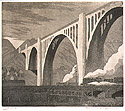


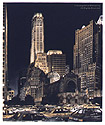

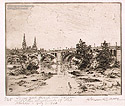



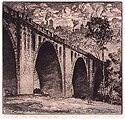


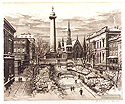


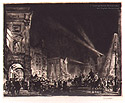

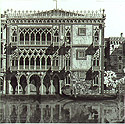


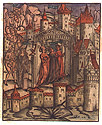


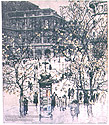



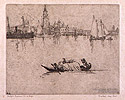





![Today and Tomorrow [Chicago]](/sites/default/files/images/architecture_fine__t_arc0406.jpg)
![Olympus [New York City]](/sites/default/files/images/architecture_fine__t_arc0407.jpg)
![Caissons on Vesey Street [New York City]](/sites/default/files/images/architecture_fine__t_arc0408.jpg)